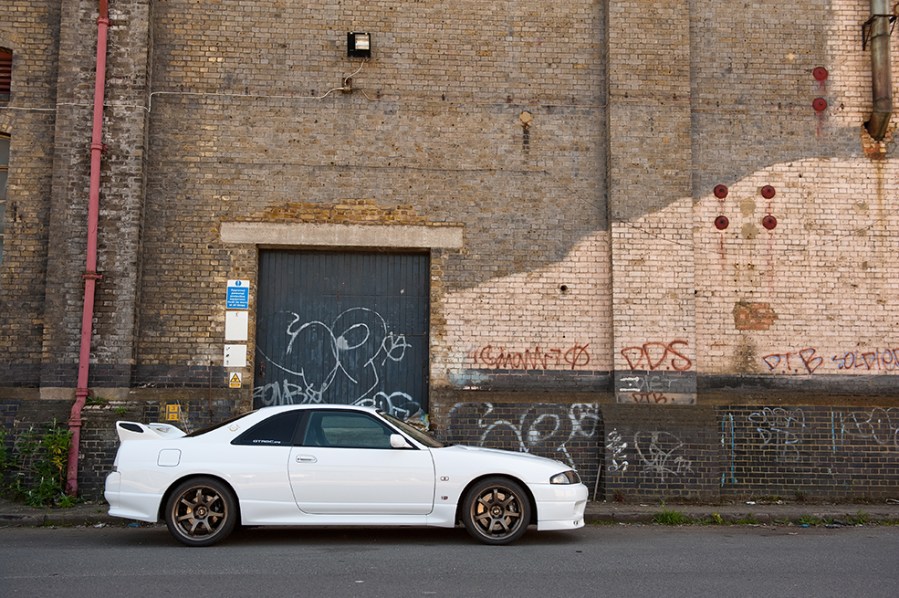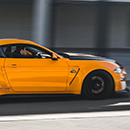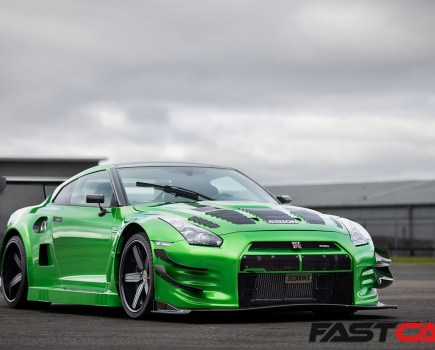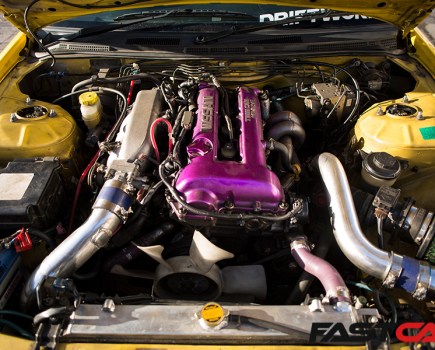Skyline GT-R models have seen a massive increase in value of late, meaning cheap ones are few and far between. However, the most cost efficient way into Nissan Skyline GT-R ownership has to be the R33. Here’s what to look out for before you part with your cash.
Of all the incredible cars in the Japanese tuning scene, the 1990s Nissan Skyline GT-R is without doubt the best known. Many would also argue it’s the best all-round performer. So much has been written about its racing dominance, awesome tuning potential, sophisticated electronics, and intelligent four-wheel drive system, that it’s become a household name worldwide. While the RB26-powered GT-Rs first appeared in 1989 with the R32, and finally bowed out with the R34 in 2002, we’re focusing on the 95-98 Nissan Skyline GT-R R33.
With prices of all GT-R-based machinery steeply rising of late, the R33 is currently considered to be the best value for money as it benefits from similar underpinnings to its R32 and R34 siblings. That being said, it can be bought for more reasonable prices, although they are rising. And it goes without question that it’s also an excellent base for modifying.
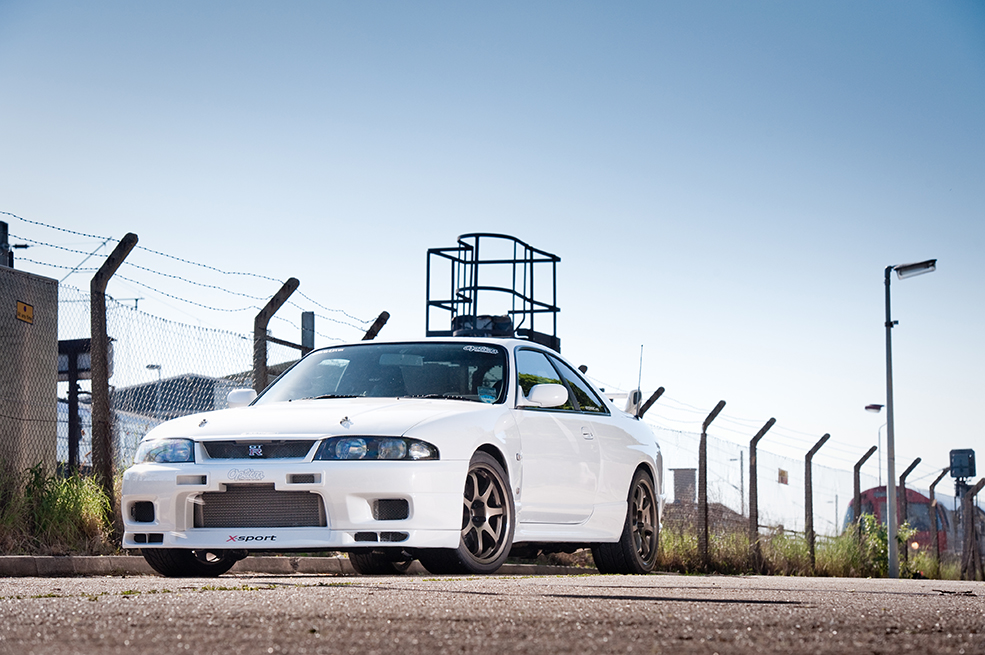
Nissan Skyline GT-R R33 history
Launched in 1995, the Nissan Skyline GT-R R33 was the first of the breed to be officially imported into the UK. Completely re-styled since the outgoing R32, it was faster and more refined. That being said, it lacked its predecessor’s motorsports heritage, meaning it never quite gained the same level of cult status with fans. Nevertheless, the R33’s arrival was well timed as it coincided with the launch of a certain PlayStation racing sim that shared the same initials and featured the model in the game. This thrusted the Skyline brand onto a whole new generation of petrolheads.
The durable twin-turbocharged RB26 2.6-litre in-line six-cylinder engine was carried over from the R32. However, tweaks increased torque substantially. The sophisticated ATTESA-ETS four-wheel-drive system (with four-wheel steer) was also enhanced. It was able to react quicker to changes. The car’s aero also saw improvements to reduce drag, although this was likely tempered by an 80kg weight gain.
The standard car’s spec was pretty good for the time. The more expensive V-Spec version adding 17in alloy wheels, lowered suspension and revisions to the four-wheel drive system and braking. 100 of these versions were officially imported into the UK by Nissan and sold for around £50,000 each. Many more JDM examples, in various specs, have since come across the sea. This includes at least one 400bhp NISMO-tuned 400R. But beware – there are also some normally-aspirated two and four-wheel drive GT-S Skylines. As well as single-turbo GTS-25t models out there pretending to be full-blown GT-Rs. Choose carefully, however, and there are still plenty of good examples out there. While examples are far from cheap, they represent the most wallet friendly way into GT-R ownership.
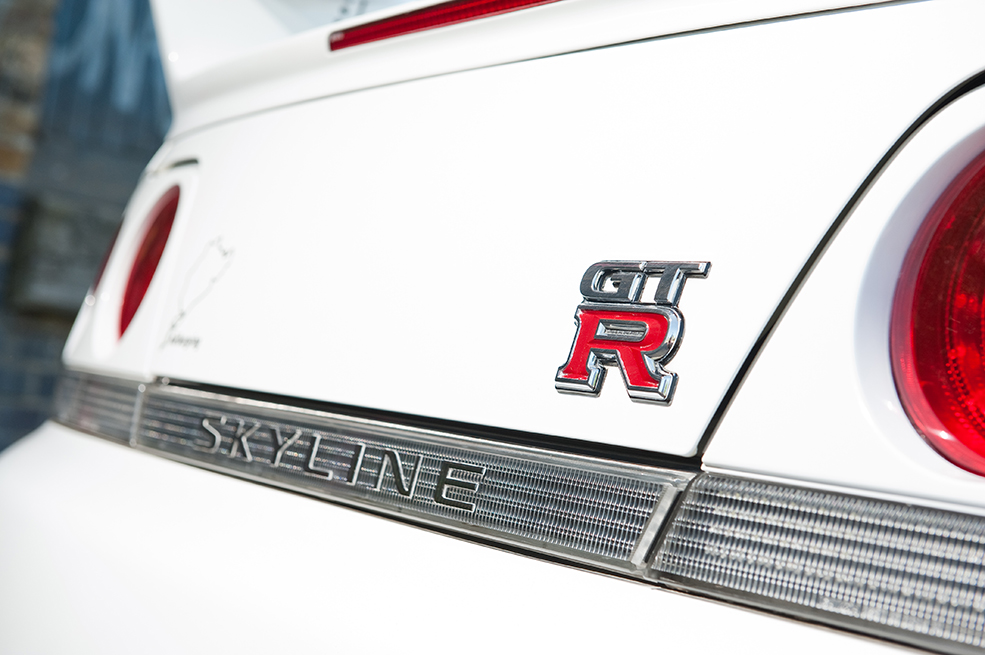
Nissan Skyline R33 GT-R: what to look out for
Trying to find a completely unmodified R33 is almost impossible. Most have had at least some minor modifications. The best buys are those from owners that have a wad of receipts and documentation from tuning houses covering all the modifications the car has received. Always ask why the car is for sale and pay for a specialist inspection to check for any hidden accident damage. Quite a few have been crashed or been stolen and subsequently recovered. Also, mid ‘90s Nissans are well known for suffering from the red rot. As a result, careful inspection is required to ensure the example you’re looking at isn’t riddled with car cancer. And beware, even examples that look clean and tidy on the outside could be harboring extensive corrosion deeper within.
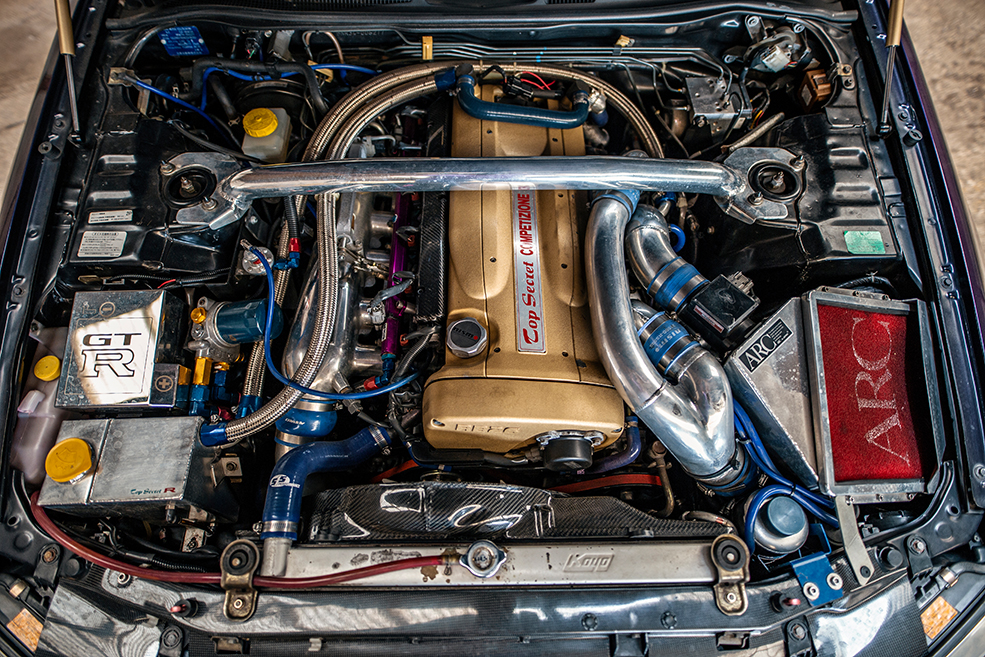
Engine & Transmission
Strong But Not Indestructible
Nissan’s RB26DETT engine is one of the true icons of the Japanese tuning world. Massively over-engineered the way many ‘90s Japanese sports cars were at the time, the 2.6-litre twin turbo engine is strong and can triple its standard power with the right tuning parts. But that’s not to say it’s bulletproof. Proper maintenance is a must, so ensure you see the car’s service history. It’s especially important to be aware of when oil changes have been carried with top quality lubricants. This should be done every 6000 miles. Listen to the engine started from cold. Any untoward knocking could spell disaster. When the engine is hot, pull off the top breather pipe (between the two cam covers) and check for excess oil mist.
Now turn the engine off. Excess noise from the turbos indicates that the bearings could be worn. Any blockages in the cooling system can cause overheating. High oil pressure around 4000 revs signals potentially serious problems. Also, the cylinder blocks, while strong, have been known to crack on highly tuned engines. It’s also worth noting the twin turbos can be fragile once the boost is increased. The final engine issue to look out for is with the car’s oil system. This can suffer from high consumption and oil starvation leading to internal damage such as worn bearings or even a rod through the block. These can all be fixed, however it’s definitely something to be wary of.
Drivetrain Checks
When it comes to the transmission, the dual mass flywheel can be noisy when stationary in neutral. Although irritating, it’s normally not a problem. Check that pedal bite point is not right at the top of its travel, this could indicate a worn clutch. The gearbox, while strong, should operate smoothly. Beware any grinding when shifting, as this could mean the synchros are on their way out. GT-R transmission repairs or rebuilds are very expensive. Listen for any grinding or knocking noises from the rear diff. Also, make sure you test the four-wheel drive system on a slippery surface if you can. When the rear starts to lose traction, some of the drive should be sent to the front.
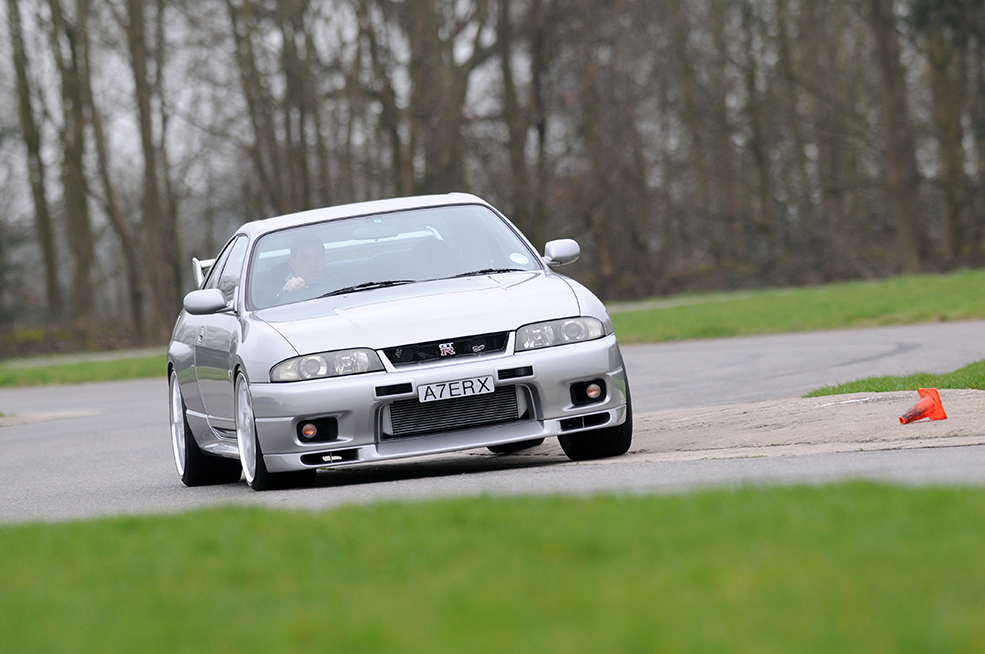
Chassis
Although hard-wearing, suspension components inevitably deteriorate with age. Track rod ends are especially prone to wear. If the owner’s fitted an adjustable coilover system, make sure you know exactly how to adjust it and that the ride isn’t too harsh. Also, check that the steering is smooth from lock to lock as steering rack seals have been known to leak.
The standard Brembo braking system is effective and easily strong enough for fast road driving and occasional trackday use. However, seriously modified Skylines will need some sort of uprated pad and potentially a rotor upgrade too. Many owners opt for a big brake kit from the likes of TarOx, KSport, AP Racing or Alcon. Check that there is plenty of pad life and the rotors are free of scoring or cracks. Also make sure there is no juddering or wobbling when braking on the test drive, which could indicate warped discs.
Although the stock 9x17in alloys suit the car well, you’ll likely find all manner of different rims fitted to R33 Skylines. Make sure you eyeball them closely looking for scrapes, cracks or large chips. Also watch out for uneven tire wear, different-make tires and ensure whatever rubber is fitted is appropriate for the speed and weight of the car. Regular four wheel geometry is important to get the handling on point.
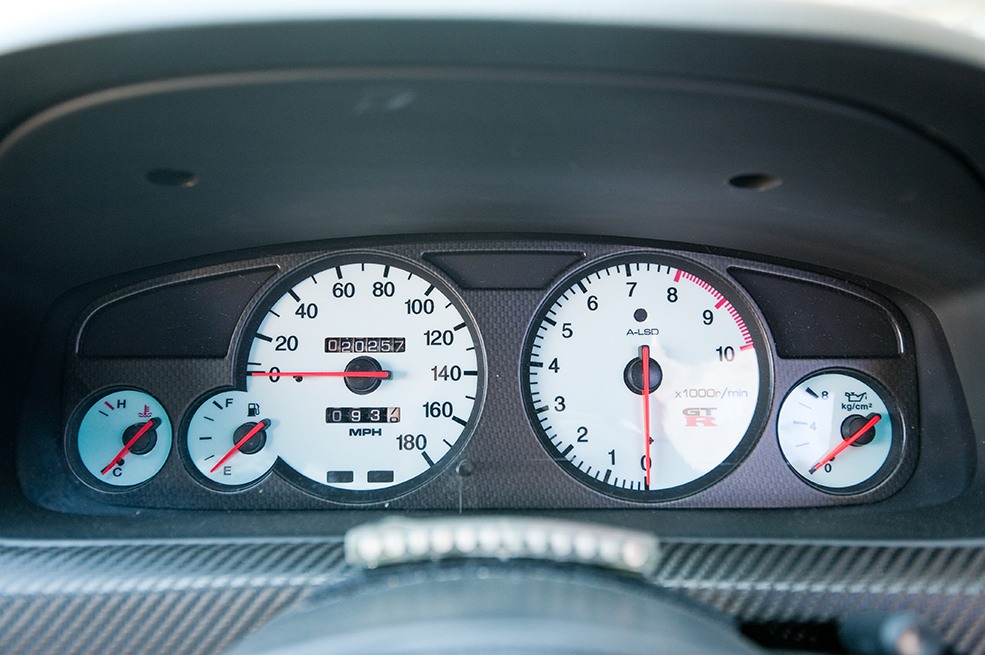
Interior & Electrics
Despite the model’s age, Skylines are pretty robust machines when it comes to their interiors and electrics and most fair well even after sustained use. Jap imports must have a speedo that reads in mph and an odometer adjusted to read miles, not kilometers.
It’s well worth checking the condition of the seat bolsters however, as if these have sagged, split or worn then getting the correct matching cloth to repair them is getting harder to come by, so could pose a problem. Steering wheels are also a regular spot that is prone to wear. However, these are a much easier fix.
When it comes to the electrics, as with any car, it’s worth spending some time checking that everything works as it should. This includes electric windows, heaters, window demisters, stereo and dash lights. Tracing electrical faults from aging brittle wires can be a costly nightmare.
The brittle wiring issues can extend into the engine bay too where the heat cycles can add to this problem. New harnesses are available for this from the US which can sort these problems fairly easily.
Check that any aftermarket gauges, boost controllers and turbo timers are working correctly and have been installed without butchering the wiring. Rev counters can be intermittent as the solder on back of the dials gets old, dry and brittle. This results in loose connections.
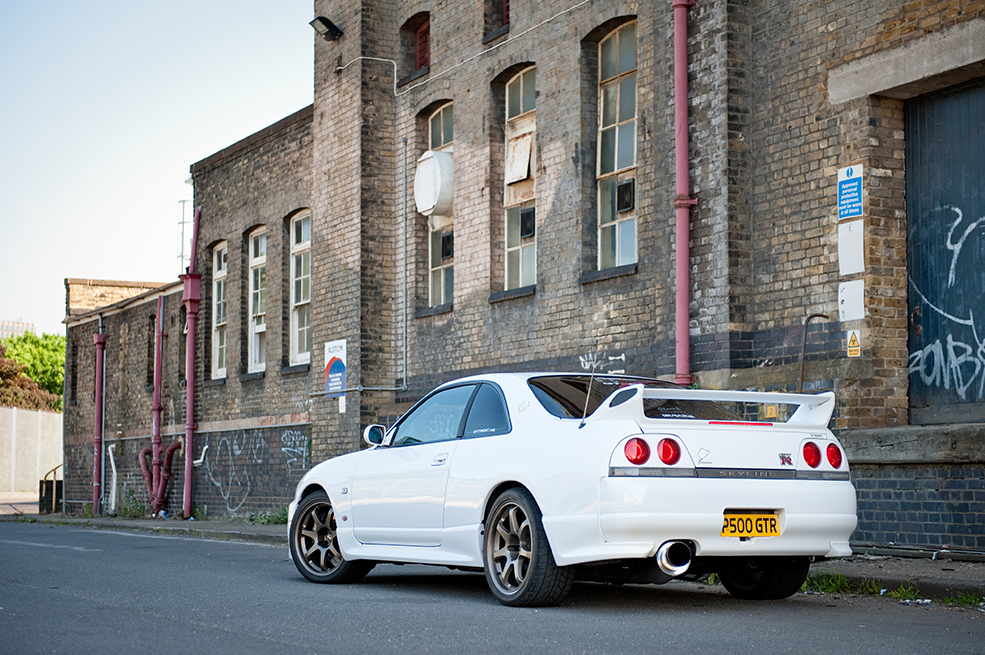
Bodywork & Trim
Inspect the car closely for any signs of accident damage and poorly fitted aftermarket body parts, plus look out for rust on the underbody, suspension, rear wheel arches, boot lid and inner wings. This is most certainly any ‘90s Nissan’s Achilles heel and with the prices where they are now, would be worth getting a specialist inspection carried out to ensure any example you are considering isn’t going to cost you the same again to be restored in order to either protect your investment or, in a worst-case scenario, make it road worthy. You will almost certainly see paint chips on higher-mileage models and take a look at the windscreen to check for any cracks or chips. While not a major problem, it can be used as a bargaining point to get the price down.
Also, make sure to verify that any model claiming to be a special or limited edition, and thus offered at a higher price, has the correct trim and badging corresponding to that specific model. So do your research.
Servicing & Maintenance
When it comes to servicing and maintaining your Skyline there are a wealth of options to choose from. Keep things stock and the prices are pretty comparable to any other fast road car, but with the huge scope for tuning that these cars possess, the choice for upgraded parts is practically limitless, if you have deep enough pockets, that is!
Regular Intervals
Mark Cardwell from RB Motorsport recommends that with the R33’s proclivity to corrosion, it’s well worth getting the car inspected thoroughly on a regular basis to try and catch any rust areas before they develop into something too serious. This should be done as part of a regular maintenance schedule and carried out every time the car goes in for its oil change, which is best to do every six months or 3000 miles.
RB Motorsport offer a full fluid service which includes engine oil, gearbox oil, differential oil and transfer box oil, plus brake fluid and an alignment check for around £350-£400, depending on the specification of fluids selected.
A timing belt service is recommended every 60,000 miles. With the prices of these cars rising by the day, less people are using them as daily drivers and are keeping them as cherished investments. Mark recommends a simple visual inspection of the belt’s condition at every service and replacing if any cracks or perishing are present.
Wear & Tear
Clutches are another area that can vary from mild to wild and the prices reflect this. Want a stock clutch for a standard power car? You’ll be looking at around $700 / £650 fitted as it is a quite labor intensive job. However, if you’re running an 800bhp monster, things can escalate quickly. Prices can climb well into the thousands for a multi-plate item that can deal with the associated torque increase.
Brakes wise, the latest R35 models have a reputation for eye-wateringly expensive discs and pads, but the R33 is much more reasonable with OE rotors available from around $150 / £120 per pair with brake pads around the same price. Mild brake upgrades are well worth it however, with a set of DBA grooved rotors and a set of EBC pads a good option for around £350.
Visit our R33 GT-R tuning guide for more advice on modifications.

Tech spec: Nissan Skyline GT-R R33
Engine: 2568cc 6cyl
Max Power: 277bhp at 6800rpm
Max Torque: 289lbs ft at 4400rpm
Transmission: 5-speed manual
Max speed: 155mph
0-60mph: 5.0sec

